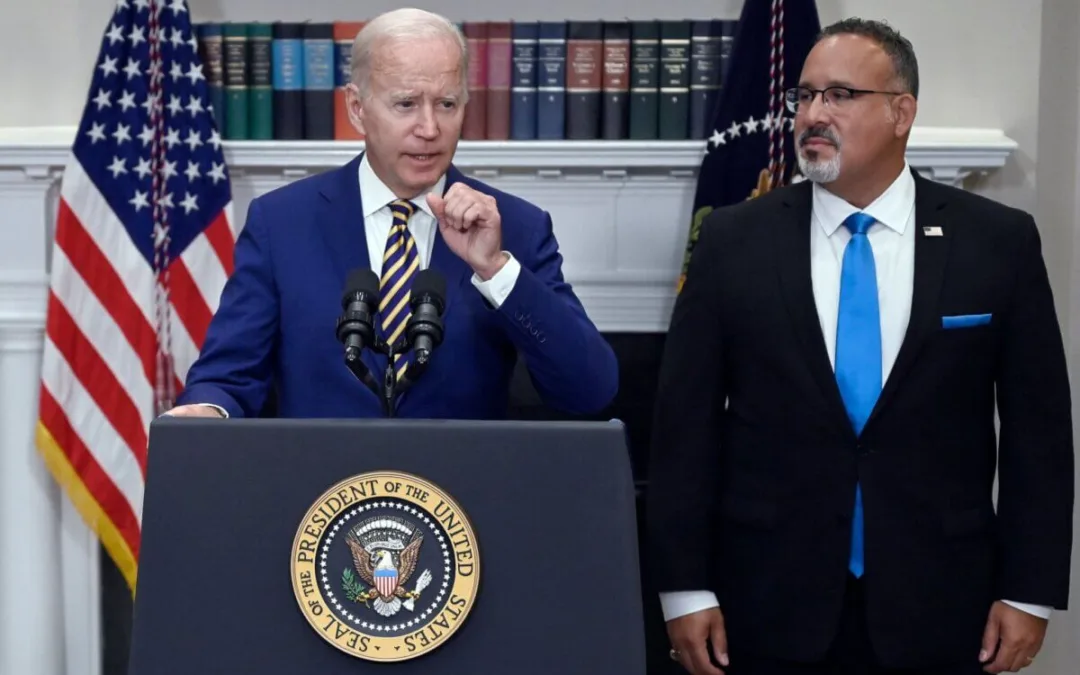
As Republicans push the president’s agenda that the U.S. economy is the best it’s ever been, many Latino moderates, and even some Democrats, credit Trump for a booming economy. But is it true?
President Trump boasts about record low unemployment rates, unprecedented job creation and a win on his trade war with China, among other achievements. Let’s take a closer look at the facts.
CLAIM #1: Unprecedented Economic Growth. According to Donald Trump, “our economy is the best it has ever been. Best employment and stock market numbers ever.” The president claims that the middle class was being crushed but, as soon as he took office, workers found jobs at unprecedented rates and the stock market rose dramatically. “We have delivered our promise,” asserted Trump. “We have ended the war on American workers.”
THE FACTS: While Trump claims he inherited a “dismal” economy, the opposite holds true. In reality, it was Barack Obama who inherited a dismal economy, which had lost 784,000 jobs (in one month alone) by the time he took office in 2009. By the time Obama left office, the economy was strong and steadily growing, and unemployment had been cut by more than half (standing at 4.7 percent). New jobs were created for 76 straight months, wages were rising, and inflation had decreased.
CLAIM #2: Job Creation. “[The United States] has gained 12,000 new factories under my administration, with thousands upon thousands of plants and factories being planned or built. We have created over half a million new manufacturing jobs,” claims president Trump.
THE FACTS: Despite taking office during the worst financial crisis since the Great Depression, as Obama’s economic policies went into effect, a whopping 8.1 million jobs were added during the last 36 months of his presidency. So while it is true that the U.S. economy gained 6.6 million jobs during Trump’s first years in office, Obama added 23% more jobs than Trump during a similar time frame. As for the record-low unemployment rate Trump claims, per the U.S. Department of Labor this can be attributed to people dropping out of the labor force. One of the reasons is that the economy is not creating jobs for the less educated and low-skilled.
CLAIM #3: Tax Cuts. When president Trump signed the Tax Cuts and Jobs Act (TCJA) in 2017, he claimed that his nearly $2 trillion in tax cuts would be “rocket fuel” for the economy and a boon for the middle class, resulting in an average pay raise of $4,000 a year for working families.
THE FACTS: This economic boon for families didn’t take place. Despite the increased tax credit for children and adult dependents, many itemized deductions have been removed under the terms of the TCJA. These tax credits might not be enough to offset the loss of the itemized deductions so, instead of helping large families, it ends up hurting them financially. On the other hand, according to the Institute on Taxation and Economic Policy, only 1% of taxpayers will get an average tax cut of $50,000 in 2020. The legislation benefits the wealthy because it gives corporations substantial permanent tax breaks through their stock holdings, while the increased tax credits for children and adult dependents,as well as the doubled-standard deductions of the act, are not permanent and will expire in 2025.
CLAIM #4: “Winning” the trade war with China. According to Trump, the Chinese had been taking advantage of the United States’ trade laws, and tariffs on Chinese imports entering the US would need to be imposed to even the playing field. He promised that China would pay for these tariffs, boosting the US economy.
THE FACTS: On the contrary, U.S. consumers are actually bearing the cost of the tariffs by paying higher prices for Chinese imports. How much are they costing the average American family? According to the Federal Reserve Bank of New York, it amounts to nearly $830 a year per household. But JPMorgan Chase puts it even higher, at $1,000 a year. Additionally, as estimated by the nonpartisan Congressional Budget Office, because the tariffs affect suppliers, wholesalers, farmers and consumers, Trump’s trade policy will reduce the average household income by approximately $1,300 a year.
CLAIM #5: Reducing the cost of medication. “Drug prices are coming down [for the] first time in 51 years because of my administration,” said president Trump in 2019 during a May 22 conference held in the Rose Garden of the White House. THE FACTS: Actually, Politifact, a fact-checking website, rated these claims mostly false. And according to an investigation by Rx Savings Solutions, in 2019 the list price of more than 3,000 drugs went up. The Associated Press also reported that in just seven months, 4,412 branded drug prices increased while only 46 were reduced. So while there is no evidence that Trump is responsible for changes in drug pricing, he has not cut medication costs. In contrast, the Affordable Care Act (ACA) reduced federal and state Medicaid drug costs by increasing the minimum base rebate for brand name and generic drugs.
Politics

Teamsters and UPS Reach Tentative Deal to Avoid Strike, 340,000 Workers to Get Raises
The tentative deal represents a huge win for full- and part-time UPS Teamster workers, who would get significant pay raises and better working...

One Republican Senator Is Blocking 265 Military Promotions, Leaving the Marines Without a Confirmed Leader
Sen. Tommy Tuberville's decision means these military officers are not getting the pay raises they’re owed, cannot move their families to wherever...
Local News

Teamsters and UPS Reach Tentative Deal to Avoid Strike, 340,000 Workers to Get Raises
The tentative deal represents a huge win for full- and part-time UPS Teamster workers, who would get significant pay raises and better working...

One Republican Senator Is Blocking 265 Military Promotions, Leaving the Marines Without a Confirmed Leader
Sen. Tommy Tuberville's decision means these military officers are not getting the pay raises they’re owed, cannot move their families to wherever...




